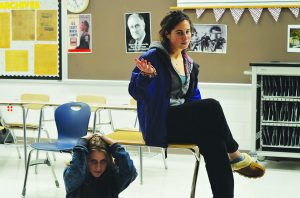Pro
February 26, 2019
Last summer, MCPS announced plans to provide updated education on how to respond to school shootings after partnering with the Montgomery County Police Department (MCPD) due to increased attention towards school shootings, such as the recent shooting at Great Mills High School in Maryland.
The usefulness of incorporating live school shooting drills is a controversial topic among students, teachers and parents. Although some parents and school staff argue against having live drills because they are traumatic and unhelpful, students need to be fully prepared in the event that a shooting does ever occur.
There were 94 shootings in K-12 schools nationwide in 2018, which was the worst year on record for people killed in school shootings. The state of Maryland has 180 school days. That means that on average, there is a school shooting almost every other school day.
Lockdown drills became widely used after the 1999 Columbine shooting in Colorado. Their purpose was to remove students and teachers from the threat of the shooter and for the past 15 years the drill has been considered a sound policy. In the National Center for Education Statistics 2015-16 School Survey on Crime and Safety (SSOCS) it was found that lockdown drills were performed in 94.6 percent of schools in the United States. Students are already aware that school shootings are prevalent and a problem, but active shooting drills could be much more helpful than lockdown drills if they are put into place. New active shooting drills allow students more freedom in how they are taught to respond to an active shooter situations. Students and staff now have the option to run away from danger if they think it is a better opinion than staying inside the school, as was normal in the past.
Although these lockdown drills are a good start, the number of students killed and injured in the last decade proves that they are not as effective as needed. Until a solution for gun control can be found, a temporary solution is a drill that prepares students for the actual situation, like active shooting drills.
These drills are especially relevant in high schools, where school shootings happen at a higher rate than middle and elementary schools. Skills learned in these drills, such as getting out of the school, barricading a room they are in or possibly fighting back against the shooter, will also help students in these stressful, life-threatening situations.
The arguments made against these drills by criminologist James Alan Fox in a Medium.com article is that they often can cause stress, anxiety, and emotional trauma for students involved in them. Even though these drills may cause emotional trauma, it is still important that students are prepared for the situation if it does arise. Schools may need to offer counseling to students who are especially upset by these drills which would help these students deal with the any trauma experienced.
Sadly, school shootings are the new normal for many high school students across the country and will continue to plague schools until action is taken to prevent them. In the meantime, students must be prepared to survive these shooting to the best of their ability.





Molly • Apr 21, 2021 at 12:46 pm
This was a good artical